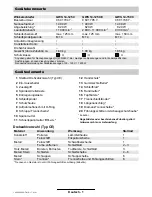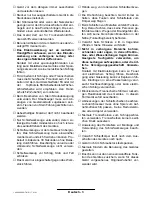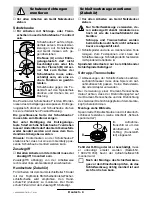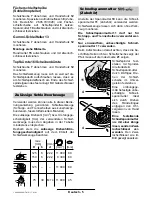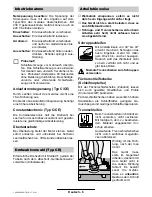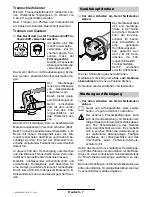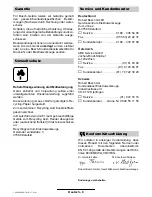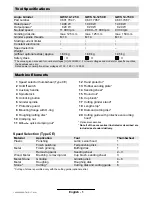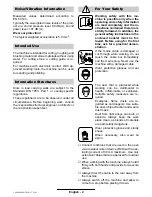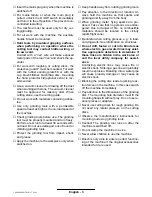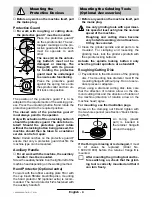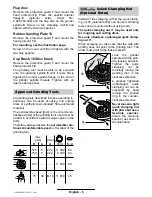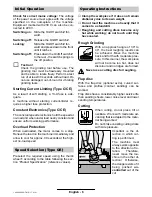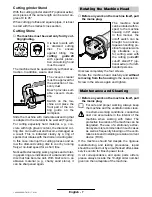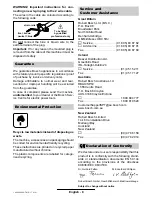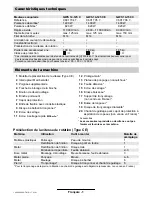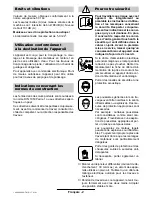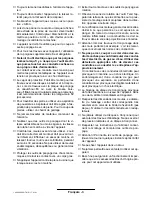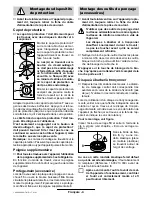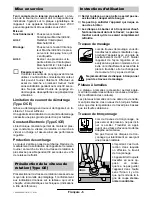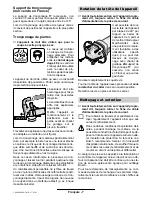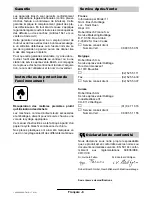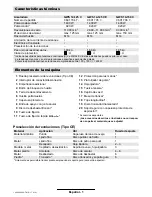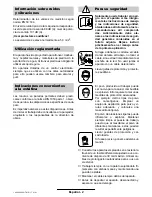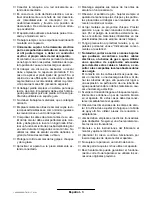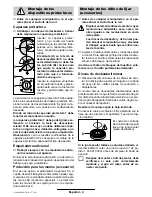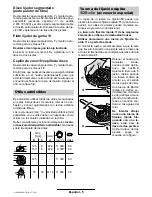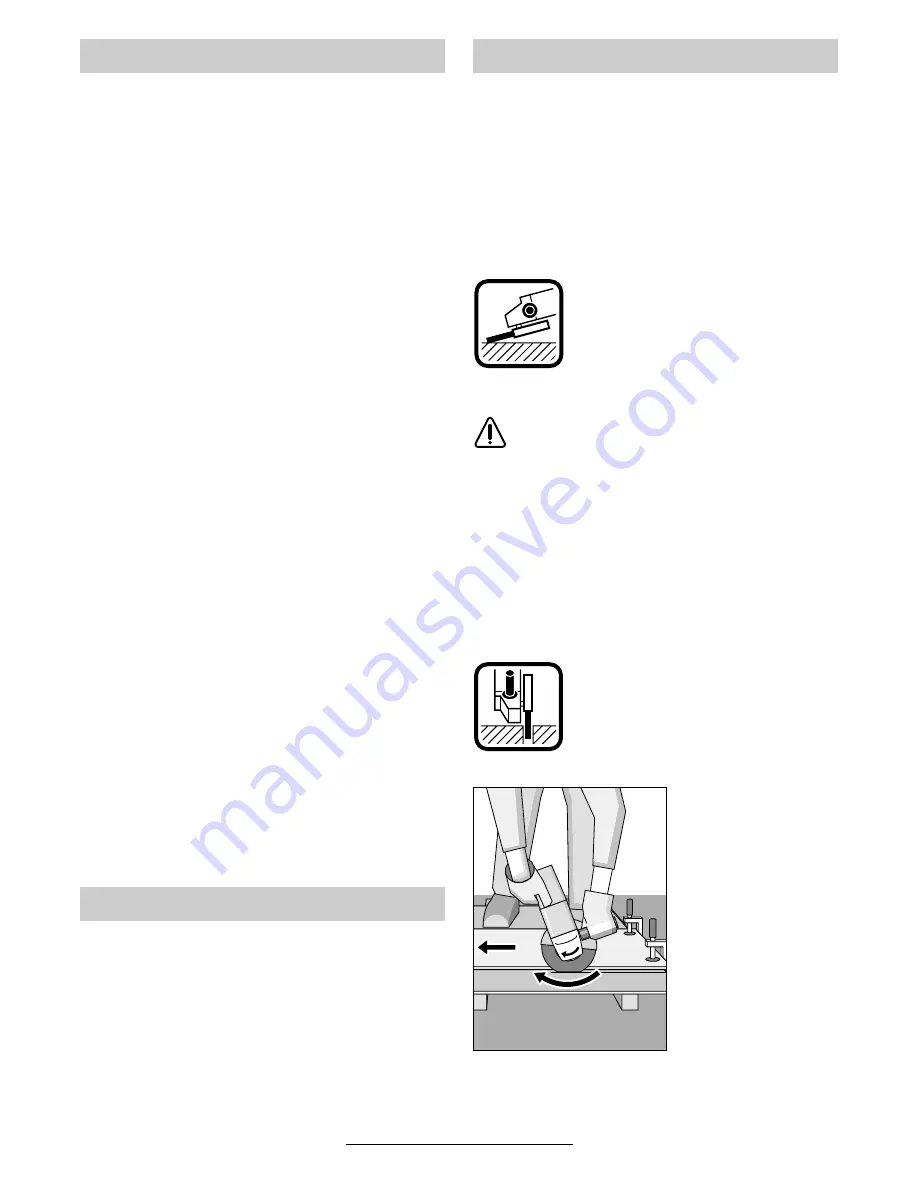
English - 6
1 609 929 599 • TMS • 17.01.01
Check for correct mains voltage: The voltage
of the power source must agree with the voltage
specified on the nameplate of the machine.
Equipment marked with 230 V can also be con-
nected to 220 V.
Switching on: Slide the On/Off switch 2 for-
ward.
Switching off: Release the On/Off switch 2.
Locking:
Slide the On/Off switch 2 for-
ward and press down to the front
until it latches.
Switching off: Press down the On/Off switch 2
to the rear - the switch springs to
the off position.
☞
Test run!
Check the grinding tool before use. The
grinding tool must be flawlessly mounted
and be able to rotate freely. Perform a test
run of at least 30 seconds without load. Do
not use damaged, out-of-round or vibrating
grinding tools.
Starting Current Limiting (Type C/CE)
As a result of soft starting, a 13-A fuse is ade-
quate.
A machine without starting current-limiter re-
quires a higher fuse protection.
Constant Electronics (Type C/CE)
The constant speed electronics hold the speed at
no-load and when under load nearly constant and
ensure uniform working performance.
Overload Protection
When overloaded, the motor comes to a stop.
Relieve the load on the machine immediately and
allow to cool for approx. 30 seconds at the high-
est no-load speed.
Preselect the required speed using the thumb
wheel 1 according to the table following the sec-
tion “Product Specification” (reference values).
■
Clamp the workpiece if it does not remain
stationary due to its own weight.
■
Do not load the machine so heavily that it
comes to a standstill.
■
Roughing and cutting discs become very
hot while working; do not touch until they
have cooled.
Rough Grinding
With an approach angle of 30° to
40°, the best roughing results can
be achieved. Move the machine
back and forth with moderate pres-
sure. In this manner, the work piece
will not become too hot, does not
discolour and no ridges are formed.
Never use a cutting disc for roughing.
Flap disc
With the flap disc (optional extra), curved sur-
faces and profiles (contour sanding) can be
worked.
Flap discs have a considerably higher service life
than sanding sheets, lower noise level and lower
sanding temperatures.
Cutting
When cutting, do not press, tilt or
oscillate. Work with moderate ad-
vancing that is adapted to the mate-
rial being worked.
Do not brake coasting cutting disks
with side pressure.
Important is the di-
rection in which cut-
ting is performed.
The machine must
always work opposite
to the direction of ro-
tation. Therefore,
never move the ma-
chine in the other di-
rection! Otherwise,
the danger exists of it
being pushed un-
controlled out of the
cut.
Initial Operation
Speed Selection (Type CE)
Operating Instructions
Содержание GWS 14-125 C
Страница 3: ...1 609 929 599 01 01 ...


